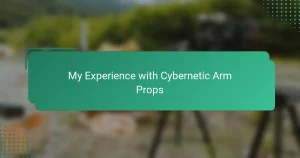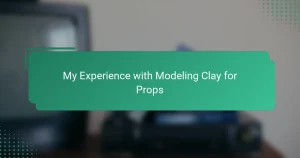Key takeaways
- Science fiction props serve as storytelling tools, enhancing immersion in their respective narratives through detailed craftsmanship.
- Choosing the right tools, such as fine detail brushes and airbrushes, significantly improves the quality of painting and detailing armor.
- Prepping surfaces with primer and proper sanding is essential for achieving durable and vibrant paint finishes on armor.
- Weathering techniques, like dry brushing and adding scratches, create realism and depth, making props feel like authentic pieces of a larger universe.
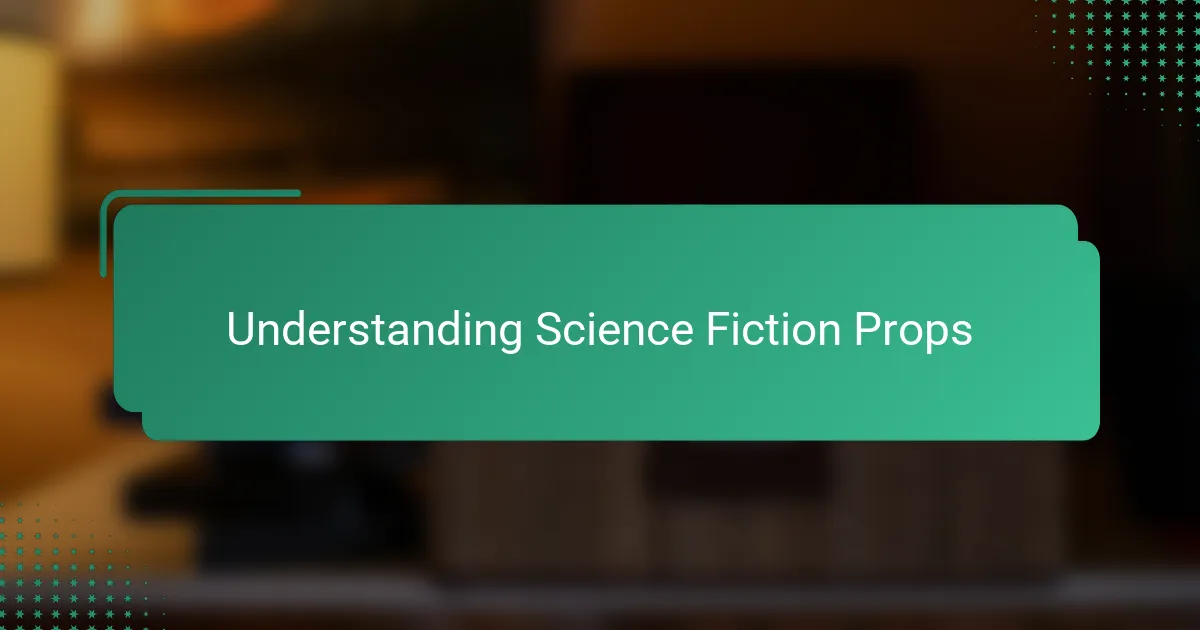
Understanding Science Fiction Props
Science fiction props aren’t just objects; they’re gateways into other worlds. When I first held a piece of sci-fi armor in my hands, I felt instantly connected to the story it belonged to—it was like touching a fragment of the future. Don’t you think that’s what makes these props so captivating?
What fascinates me most is how every detail in a prop tells a story, from the scars of battle to the gleam of advanced technology. It’s not just about looking cool; it’s about creating something believable enough to make your imagination take flight. Have you ever noticed how a well-crafted prop can completely shift your mindset and immerse you deeper into the sci-fi universe?
Understanding these nuances changes how you approach building or painting your own pieces. Once I realized that, painting my sci-fi armor became less about applying color and more about bringing an authentic narrative to life—each brushstroke adding depth to the character it represents. Have you experienced the satisfaction of turning a simple prop into a storytelling masterpiece?
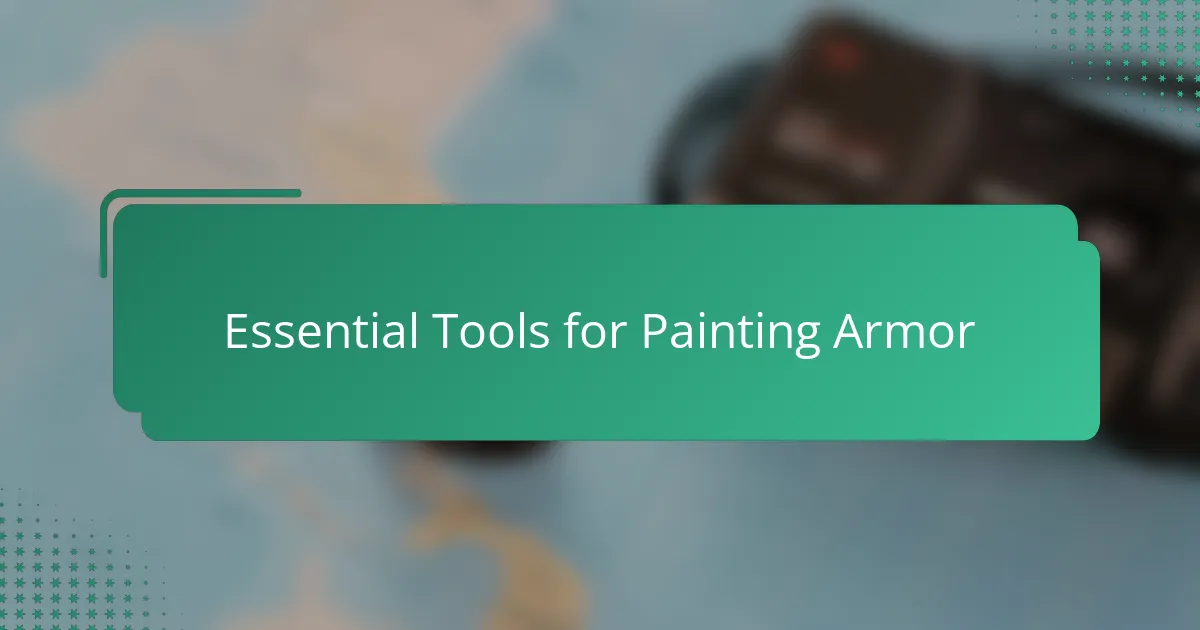
Essential Tools for Painting Armor
When I started painting my armor, I quickly learned that having the right brushes makes all the difference. Fine detail brushes helped me capture those tiny scratches and weathering effects that bring the armor to life. Have you ever struggled with smudged lines or uneven edges? Good brushes solve that problem beautifully.
Another tool I can’t recommend enough is a quality airbrush. It lets you apply smooth, even coats and create subtle gradients that look like advanced tech plating. I was amazed at how an airbrush transformed my armor from flat to dynamic—it’s like the difference between a comic book and a movie screen.
Of course, you need the right paints. I stuck with acrylics because they dry fast and are easy to work with, which keeps the process fun instead of frustrating. Plus, layering them builds up that worn, battle-hardened look I love. What’s your go-to paint? For me, choosing the right colors felt like picking the personality for my armor.
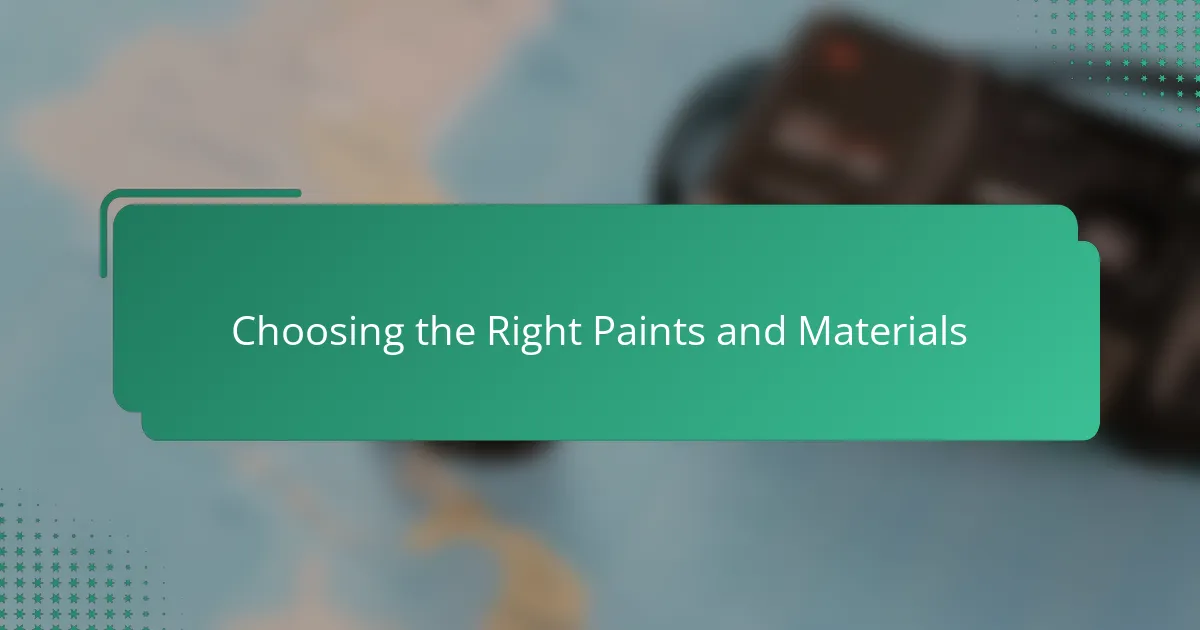
Choosing the Right Paints and Materials
Picking the right paints felt like choosing the soul of my armor. I gravitated towards acrylics because they’re forgiving—you can layer them without worrying about long drying times, which let me experiment freely. Have you ever felt stuck waiting forever for paint to dry? Acrylics saved me from that frustration, keeping my momentum alive.
Materials mattered just as much as paint. I found that prepping the surface with a good primer made the colors pop and stick better, which was a game-changer for the final look. It was a bit like laying a solid foundation before building a house—skip it, and your masterpiece might peel away too soon. Do you remember the disappointment when paint chipped off your project? Primer helps avoid that heartbreak.
Then there’s the finish—matte, gloss, or satin? Choosing this made me think about the story my armor tells: sleek and futuristic or rugged from battle. I ended up mixing finishes, which gave the armor a layered realism I hadn’t expected. Have you ever tried combining textures to add depth? It’s surprisingly satisfying.
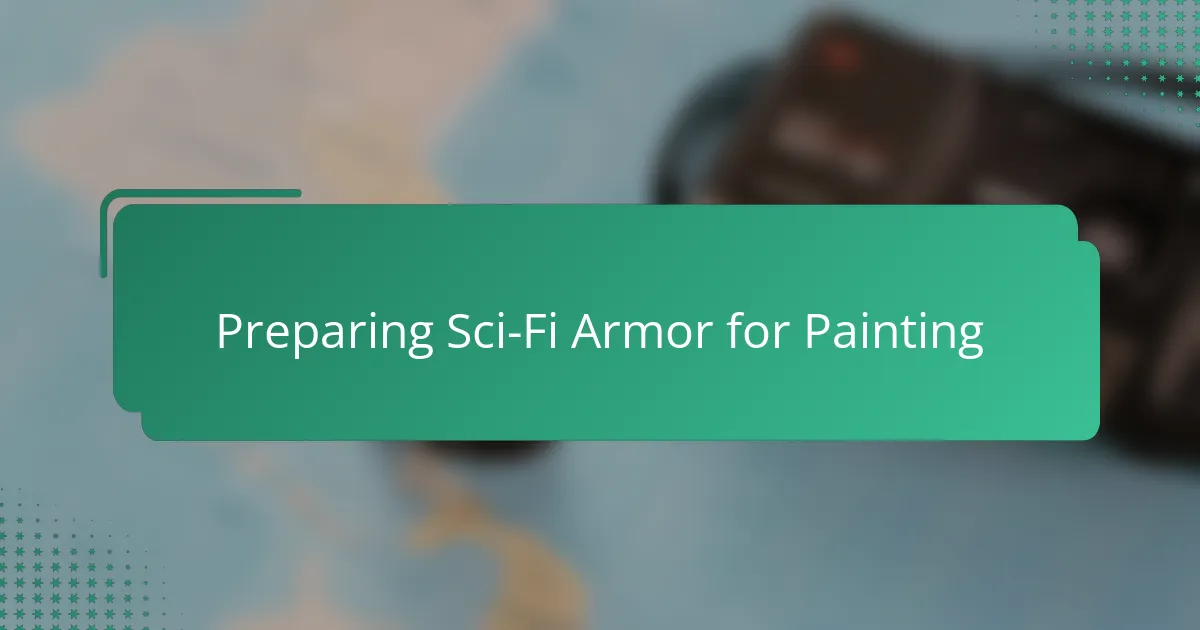
Preparing Sci-Fi Armor for Painting
Preparing my sci-fi armor for painting was like getting ready for a big transformation. The first thing I did was clean every piece thoroughly—dust and oils could ruin the paint finish, and learning that the hard way was frustrating. Have you ever painted over dirt only to have it flake off later? Avoiding that is crucial.
Next came sanding. I spent time gently roughing up the smooth surfaces to give the primer something to grip onto. It felt tedious at first, but I quickly saw how this simple step made a huge difference in durability. I ask myself every time: is skipping sanding really worth the risk of paint peeling?
Priming was the real game changer. Applying a thin, even coat of primer not only helped the paint stick better but also made the colors pop like nothing else. When I skipped it on a small piece, the paint looked flat and lifeless—but with primer, my armor suddenly came alive. Isn’t it funny how such a basic step can impact the whole look?
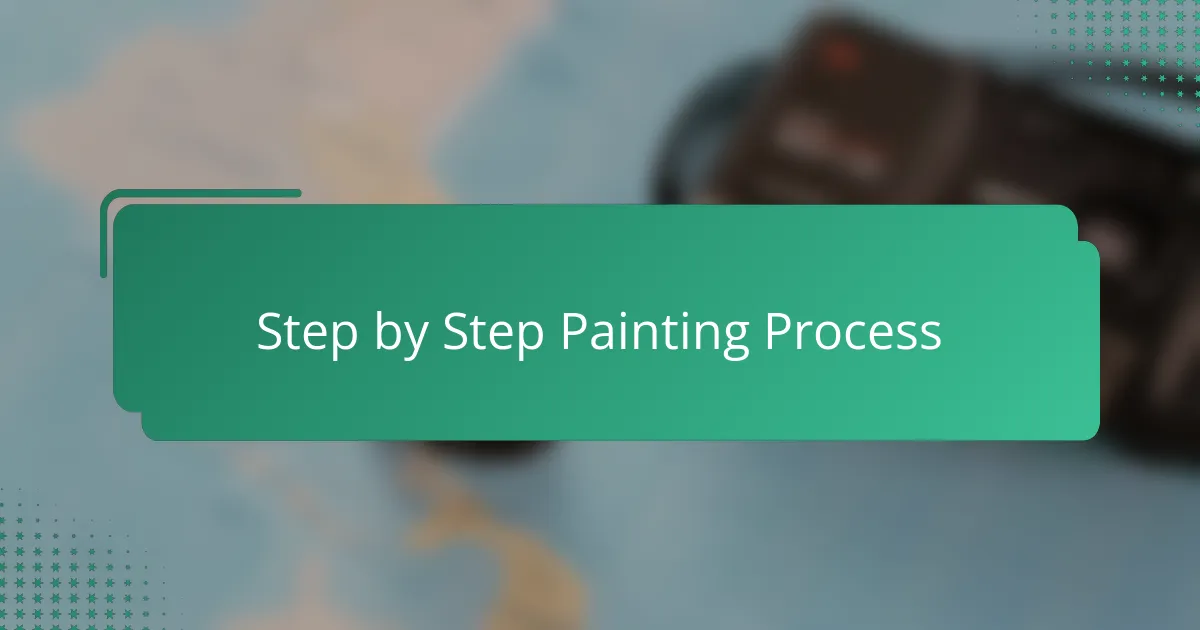
Step by Step Painting Process
Starting the painting process, I always begin with thin, even base coats. It’s tempting to rush and slap on thick layers, but trust me, patience here pays off—each smooth coat builds a solid foundation for the details to pop. Have you ever tried layering paint only to have it crack later? That’s why I take my time in this step.
Once the base is down, I dive into adding shadows and highlights. Using a slightly darker shade in crevices and lighter tones on raised areas creates that three-dimensional look that really sells the sci-fi armor’s realism. I often imagine where the “light source” would hit the armor naturally—this mental exercise makes the painting feel less mechanical and more alive.
Finally, weathering brings everything together. I use dry brushing and tiny splatters to mimic scratches, dirt, and battle scars—each mark tells a story. It’s oddly satisfying to see a blank, sterile surface transform into a worn, lived-in piece. Don’t you find that the character of your armor comes alive once you add those imperfections?
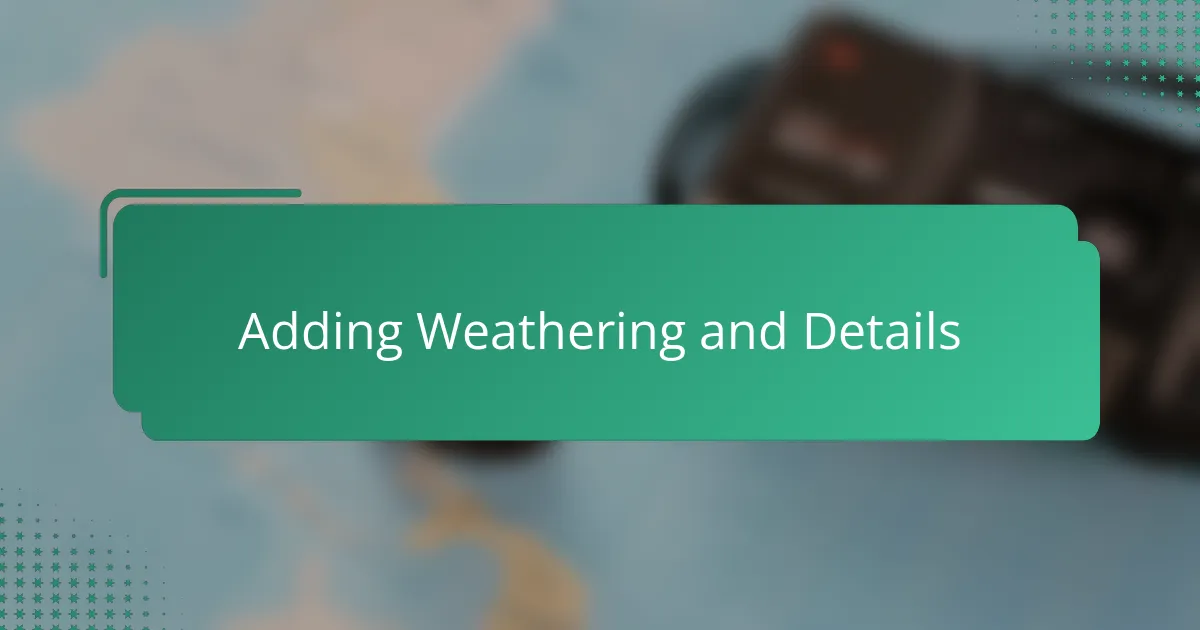
Adding Weathering and Details
Adding weathering to my sci-fi armor felt like breathing life into a once-pristine machine. I used dry brushing—lightly sweeping a nearly dry brush loaded with metallic paint over edges and raised surfaces—to simulate worn metal and chipped paint. It’s amazing how just a few strokes can make your armor look like it’s seen countless battles.
For details, tiny scratches and grime spots were my go-to additions. I found that using a fine brush with a dark wash helped me settle paint into crevices, creating subtle shadows that suggest dirt buildup. Does it surprise you how these small touches can add so much depth and realism to a prop?
The best part is how weathering invites storytelling. Each scuff or rust spot hints at the armor’s history, sparking my imagination about the battles fought or planets explored. I’ve noticed that when I lean into imperfections, the armor stops looking like a toy and starts feeling like a piece of a living universe. Have you experienced that moment when your prop suddenly feels real?

